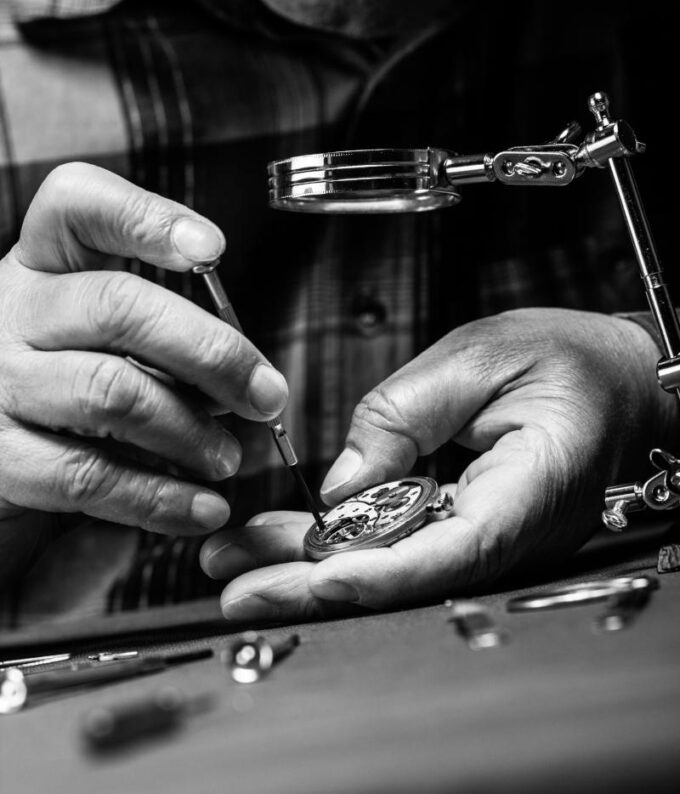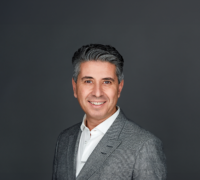
“We were so scared of our IPO”: Leaders Unplugged with former On-CEO Marc Maurer
Marc Maurer shares how ON grew from startup to IPO by defying hype, focusing on purpose, and leading with humility in this candid Leaders Unplugged episode....

by Stéphane J. G. Girod, Jana M. Arden Published April 25, 2025 in Leadership • 9 min read
When Ilaria Resta stepped into the role of CEO at Audemars Piguet in 2024, it wasn’t a calculated career move – it was, as she describes it, totally unexpected. The former executive, who has built her career in beauty, fragrance, and consumer goods, had never imagined herself leading one of Switzerland’s most iconic watchmakers. But when the call came, she didn’t hesitate. “What didn’t tempt me? Nothing,” she said.
Eighteen months in, Resta isn’t just managing the legacy of a 150-year-old brand. She’s reshaping it from within – layering tradition with innovation, bringing emotional intelligence into leadership, and challenging assumptions about who watchmaking is for and how it should be led. Central to her approach is a leadership model she calls “circular leadership” – a deliberate shift away from top-down control toward proximity, trust, and creative empowerment.
At the heart of this inclusive, purpose-driven strategy is Resta’s philosophy of circular leadership.
At the heart of this inclusive, purpose-driven strategy is Resta’s philosophy of circular leadership. Rather than leading from the top, she positions herself at the center – close to the action, the people, and the knowledge of a company.
“Leadership used to be about knowing and teaching,” she says. “Now, it’s about learning and doing.” She sees her role not as a commander but as an enabler – removing barriers, building trust, and fostering a culture where creativity flourishes. Diversity, she believes, is not just a value but a “propellor of ideas.”

“Love is about passion – not just for the product, but for people.”
Her leadership mantra is grounded in three deceptively simple words: love, learn, and legacy. These three principles form the foundation of her circular leadership model, anchoring an approach that favors empathy over ego, and connection over control.
Love is about passion – not just for the product, but for people. It’s the energy that fuels deep care for the craft, for colleagues, and for the communities a company touches. For Resta, love shows up in how leaders engage with their teams and how they connect with purpose.
Learn speaks to the mindset required to navigate constant change. In a world defined by digital disruption, evolving customer expectations, and complex global dynamics, adaptability and humility have become non-negotiable traits. Resta believes that leaders who stop learning quickly become obsolete.
Legacy, finally, is about impact. Resta challenges her teams not only to perform but to reflect on what they are leaving behind. What systems, values, or decisions will outlast them? What will future generations inherit? In her view, great leadership is measured not just by quarterly results, but by the positive change that endures.
“It’s a different way of working with a different ecosystem and a different way to design an organization,” she noted. “I ask people to come to my office if they have something to discuss or present. We create this very informal, action-oriented approach to leadership and managing people. So far, it’s working well.”
As a lifelong admirer of Swiss culture and craftsmanship, Resta was captivated by the opportunity to steward a company that had remained fiercely independent – and human – since its founding.
Resta’s path to Haute Horlogerie was anything but conventional. With a background in Latin, Greek, and philosophy, she originally envisioned a career in teaching. A serendipitous encounter with Procter & Gamble shifted her focus to marketing, where she rose through the ranks to lead a major beauty division in the US. Later, she helmed a Swiss fragrance company with a mandate to future-proof it through transformation.
The invitation to join Audemars Piguet came unexpectedly, but it tapped into something deeply personal. As a lifelong admirer of Swiss culture and craftsmanship, Resta was captivated by the opportunity to steward a company that had remained fiercely independent – and human – since its founding.
“It was totally unexpected,” she said. “I never thought that this was an avenue for me, because when I looked around, I could only see people with a long tenure of experience in watchmaking, and at my seniority level, I didn’t see anyone coming from outside.”
But clearly, an outsider was exactly what the 150-year-old brand needed – especially as the Swiss watch industry confronts mounting challenges. A proposed tariff on exports to the US – its largest market – had cast a shadow of uncertainty over future trade. Meanwhile, a sharp slowdown in Chinese demand compounded pressures, as post-pandemic exuberance gave way to cautious consumer sentiment.
Factor in the booming pre-owned market, shifting generational expectations, and rising calls for sustainability, and the need to evolve became undeniable – even for the most storied manufacturers. For leaders like Resta, the question was not whether the industry will change – but how to ensure it thrives through transformation. Yet despite these headwinds, Resta remains bullish on the industry’s future.
“The watch industry, the luxury industry, and any other industry at this stage is going through an important inflection point,” she said. “But we should separate what the short-term uncertainties are – due to macroeconomic and political choices – from the industry-specific challenges, and then from the long-term outlook.”
“If you look at the long term, I’m extremely confident that this industry will continue thriving,” said Resta. “Why? Because the fundamentals are solid and healthy. When I look at the fundamentals, I look at the broad interest in watchmaking from the clients of today – and the clients of tomorrow.”

One of the clearest signs that luxury watchmaking still holds strong appeal, Resta observed, is the growing interest from previously overlooked customer segments – what she calls “white spaces.” These include younger generations like Gen Z and Gen Alpha, women collectors, and emerging markets across Asia.
Among the most promising, she notes, is generational change. “There is a growing, passionate base of watch enthusiasts,” she said. “This number is growing and diversifying into new generations.”
Another significant white space is gender. “For many years, the industry has been stereotyping women into a specific type of watchmaking, which is jewelry watchmaking,” she explained. “The industry needs to adjust this type of view.” She also wants to challenge outdated ideas of who the typical male collector is. “We see more and more men buying smaller watches – elegant ones with diamonds, with stones,” she added.
The third white space is geographical. Resta sees major potential in markets like India and Southeast Asia, where interest in high-end watchmaking is accelerating. “We are all well aware that all eyes are on India as the next big country,” she said. “Today, the penetration and development of the category of watchmaking is pretty low compared to the number of high and ultra-high-net-worth individuals – and there is a broad interest in watchmaking there.”
The type of design we have cannot be assembled and perfected without the work of hands. This is part of the philosophy of our savoir-faire.
As 2025 marks its 150th anniversary, Audemars Piguet has used the occasion to spotlight the human stories behind the brand. “We started the year celebrating the most important people that made this story possible for 150 years – people who are working or have worked at Audemars Piguet,” said Resta. “We also spent a significant time in the archives trying to dig deep into the history and understand all the chapters of the story,” she added.
Delving into company archives revealed the story of Suzanne Audemars, a woman who overcame multiple personal tragedies to set her children on a path into watchmaking. Resta sees this as emblematic of the resilience that defines Audemars Piguet.
“We celebrated from this woman onward, all the generations of people that worked against adversity… many adversities, like wars and financial crisis, to bring this beautiful brand to today,” said Resta.
That legacy continues with the launch of a new perpetual calendar watch – a complication that doesn’t require adjustment for a century. For Resta, it’s more than just a technical feat. It’s an homage to a brand that has weathered wars, crises, and global upheavals, emerging each time with renewed purpose.
While some might see tradition and innovation as opposing forces, Resta sees them as complementary. “We do not oppose innovation for the sake of staying loyal to the old ways of working – that would kill any company, right? You need to move forward, but use the tools for what they are – not where it does not fit your business models.”
While Audemars Piguet uses AI as a tool for process optimization and creating data insights, Resta is clear that it has no place in the creative soul of watchmaking. “I don’t think AI will design a watch. I don’t think robotics will assemble a watch either, because, simply put, the type of design we have cannot be assembled and perfected without the work of hands. This is part of the philosophy of our savoir-faire.”
The opening of the Audemars Piguet museum in La Brassus in La Vallée de Joux in the Swiss Jura, in 2020, as well as its AP Lab and running masterclasses to the public, were key parts of enhancing the customer experience.
With demand for Audemars Piguet watches far outstripping supply, Resta is focused on enhancing understanding rather than chasing volume.
“We cannot do more without breaking the model, or without compromising certain elements of qualities and savoir-faire,” said Resta. “We have a demand which is 100 times (our production), which is a very good problem to have, relatively speaking, because, of course, it creates desire, sometimes frustration, and we want to manage that.”
“What we have discovered, and what we are doing more, is when we explain the time it takes to create a watch, when people come and see the way we produce, and they see the level of human interaction with the watch, the level of quality controls done personally with the watch, people understand what they are buying into. They are buying into a craft and an emotional object; they can literally see the face of the watchmaker who assembled that watch. They understand why it takes a long time.”
The opening of the Audemars Piguet museum in La Brassus in La Vallée de Joux in the Swiss Jura, in 2020, as well as its AP Lab and running masterclasses to the public, were key parts of enhancing the customer experience. “We are trying to share this common passion of watchmaking with more people so they can participate in the Audemars Piguet story in other ways.”

In a world where speed often eclipses substance, Resta’s approach is a timely reminder that enduring value isn’t built in quarters, but across generations.
As the company enters its next chapter, it is proving that timeless craftsmanship can coexist with bold reinvention. In an industry steeped in tradition and facing unprecedented pressures, Resta brings a leadership style rooted in empathy, adaptability, and long-term thinking. Her philosophy – ‘Love, Learn, and Legacy’ – is a blueprint for building resilient organizations in uncertain times.
Resta is not interested in preserving tradition for its own sake. She is building on it, challenging it, and opening it to new voices – from women collectors to first-time buyers in emerging markets – all while staying anchored in what makes Swiss watchmaking exceptional: patience, precision, and people.
In a world where speed often eclipses substance, Resta’s approach is a timely reminder that enduring value isn’t built in quarters, but across generations. Her model of circular leadership – grounded in empathy, proximity, and long-term impact – is helping Audemars Piguet stay pertinent, human, and true to a craft that still tells time, even as it transcends it.

Professor of Strategy and Organizational Innovation
Stéphane J.G. Girod is Professor of Strategy and Organizational Innovation at IMD. His research, teaching and consulting interests center around agility at the strategy, organizational and leadership levels in response to disruption. At IMD, he is also Program Director of Reinventing Luxury Lab and Program Co-Director of Leading Digital Execution.

Head of the Luxury Sector at KPMG
Jana M. Arden is the Head of the Luxury Sector at KPMG. She focuses on organic and inorganic growth strategies and enterprise performance in the luxury sector. Before joining consulting, Jana worked in premium retail industry, holding various roles across Asia and Europe. Jana is a co-founder and board member of the IMD Luxury 2050 Forum. She is an active contributor to a range of business magazines and academic periodicals. She holds an MBA from IMD Business School and a Master’s in Liberal Arts in Industrial-Organizational Psychology from Harvard University.

5 hours ago • by Alyson Meister, Marc Maurer in Leadership
Marc Maurer shares how ON grew from startup to IPO by defying hype, focusing on purpose, and leading with humility in this candid Leaders Unplugged episode....

July 7, 2025 • by Richard Baldwin in Leadership
The mid-year economic outlook: How to read the first two quarters of Trump...

July 4, 2025 • by Arturo Pasquel in Leadership
Susanne Hundsbæk-Pedersen, Global Head of Pharma Technical Operations at Roche, shares how she has navigated the various pivots in her career, and the importance of curiosity, optimism and energy. ...

July 3, 2025 • by Eric Quintane in Leadership
Entrepreneurial talent who work with other teams often run into trouble with their managers. Here are ways to get the most out of your ‘boundary spanners’...
 Audio available
Audio availableExplore first person business intelligence from top minds curated for a global executive audience